If You Want to Be a Badger …
There are a few things that every UW–Madison grad should know. Do you make the grade?
Being an official Badger is about more than just what you learn in the classroom. To earn your red and white stripes, you need to know a few things about Wisconsin traditions and rituals, past and present. Here’s a refresher course in the basics of being a Badger.
“Varsity”
Badgers have sung this sentimental closer for more than a century. The tune’s staying power can be found in its easy-to-remember lyrics and arm-swinging motion, introduced by former UW Marching Band Director Ray Dvorak in 1934. To do the Varsity wave like a loyal Badger, you have to remember to use your right arm and start your swing from right to left during the song’s last line:
Varsity! Varsity!
U-rah-rah! Wisconsin,
Praise to thee we sing!
Praise to thee, our Alma Mater,
[Get ready. Get set. Wave!]
U-rah-rah! Wisconsin!
Paul Bunyan’s Axe
All Badger fans worth their salt know about the legendary battle for Paul Bunyan’s axe, the trophy passed between football rivals Wisconsin and Minnesota. Badgers should also know that before Paul Bunyan’s axe, the trophy was the Slab of Bacon. It was passed between the Badgers and Gophers from 1930 to 1943, when the trophy was “lost” and neither school claimed to know its whereabouts. The slab was a piece of wood that had hooks on both ends so the trophy would display either a W or M, with game scores engraved on its back. After the slab disappeared, Paul Bunyan’s axe replaced it in 1948. The slab wouldn’t be seen again until 1994, when it was happened upon in a storage room during a renovation of Camp Randall Stadium. It currently resides in the Wisconsin football office. Oddly enough, when the slab was discovered, the scores of the games from 1943 to 1970 were found to be engraved on its back.
Honest Abe
Though students today might think of him (or more intimately, his lap) as a commencement photo op, learned Badgers know that Abraham Lincoln is memorialized on Bascom Hill because he signed the Morrill Act in 1862 to provide federal aid to land-grant colleges such as the University of Wisconsin. The act was hailed as the “Education Bill of Rights” and proved to be instrumental in giving more students from all economic walks of life access to a college education.
Fifth Quarter
The UW Marching Band is nationally famous for its Fifth Quarter, a celebration that takes place after UW football games. Win or lose, Badger fans sing, dance, and cheer while the band plays traditional favorites such as “On, Wisconsin,” “Varsity,” and “You’ve Said It All” (the Bud song). Originally designed to give fans something to listen to on their way out of Camp Randall Stadium, the postgame concert has grown into a Wisconsin tradition with ever-evolving band antics and audience participation. How does Wisconsin convince thousands of fans to stick around for thirty minutes after every home game? In 1978, when it was announced that the band would delay playing until ten minutes after the game had ended — to enable the weak-of-heart to exit the upper deck before the “swaying” began — interest in the post-game festivities exploded, and a tradition was born. As every true Badger knows, “When you say ‘WIS-CON-SIN,’ you’ve said it all!”
School Colors
When it comes to UW–Madison’s official school colors, there is no gray area. They are cardinal and white, and have been since before the Daily Cardinal, the UW’s first student newspaper, was established in 1892. That’s not to say red is wrong, however. Cardinal is obviously a shade of red. That’s why alumni and students wear The Red Shirt, cheer “Go, Big Red!” during Badger football games, and gather as the Grateful Red in the student section at the Kohl Center. Badgers like to rally around red.
Wisconsin Idea
One of the university’s longest and deepest traditions, the Wisconsin Idea is the principle that education should influence and improve people’s lives beyond the university classroom. Former UW President Charles Van Hise 1879, 1880, MS1882, PhD1892 (who clearly spent a lot of time in the classroom) is most often credited for articulating the philosophy in 1904, and its definition has evolved throughout the university’s history, creating a living, breathing expression for Badgers of all generations. The Wisconsin Idea is now understood to mean that the university benefits not just those in the state, but around the world. In 2011–12, the UW is celebrating the Wisconsin Idea throughout the entire academic year.
Camp Randall
Built in 1917, Camp Randall Stadium is the fourth-oldest college-owned football complex in the nation. Badgers marching into Camp Randall for a football game should know that the athletic field was a Civil War training post named after Governor Alexander Randall. Seventy thousand Wisconsin troops, representing nearly all of the state’s military might, were trained at the camp before being sent to battlefields in the South. In 1862, 1,400 Confederate soldiers were captured — most of them taken in an action along the Mississippi called the Battle of Island Number 10. They were taken north and held at Camp Randall. Many of these soldiers died of their wounds and are buried in a cemetery on Madison’s west side in an area known as “soldiers’ rest,” the northernmost Confederate cemetery in the United States.
Bucky Badger
To be a Badger, you have to dig into the origins of our beloved mascot. In the early 1800s, when settlers came to the Midwest in droves to mine for lead, badgers were abundant in southwestern Wisconsin’s prairie habitat. The settlers who worked in Wisconsin’s lead mines were nicknamed “badgers” for their digging ways, and because many of them lived in burrow-like dwellings through the winter, much like badgers in hibernation. The lead industry was so important in Wisconsin’s early days that the badger was honored in 1851 with a place atop the state seal, along with a miner holding a pick. Shortly after football became an official sport at the UW in 1889, the badger was adopted as an athletic mascot, and so began Wisconsin’s love affair with the mighty mustelid. The name Bucky — short for Buckingham U. Badger — came along in 1949, chosen by student vote.
Babcock Ice Cream
Though widely divided on favorite flavor, Badgers are united when it comes to picking a sweet treat on campus. The UW’s dairy building has been making and selling ice cream for nearly a century, but the name Babcock ice cream did not arise until after Babcock Hall, the third dairy building, was built in 1951. Specializing in gourmet ice cream, the Babcock Dairy Store creates special, limited-edition flavors such as Mad Grad Medley (named in honor of the Wisconsin Alumni Association’s 150th anniversary) and Berry Alvarez (named for Athletic Director Barry Alvarez) in addition to longtime favorites such as Blue Moon, Butter Pecan, and Orange Custard Chocolate Chip.
“Jump Around”
A hit single by the band House of Pain, “Jump Around” made its Camp Randall debut in 1998. The song is now played between the third and fourth quarters of all Badger home football games, accompanied by the entire student section (fifteen thousand strong) jumping up and down in the bleachers. Badgers in the know — even those without the endurance to jump around for three-plus minutes — understand why it’s on credit cards and T-shirts spotted around the country.
Statue of Liberty
Even Badgers who weren’t students in the late 1970s know about the university’s most famous prank. Led by James Mallon ’79 and Leon Varjian x’83, the Pail and Shovel Party was elected to lead the Wisconsin Student Association in 1978, vowing to give campus issues “the seriousness they deserve.” The following winter, they erected a gigantic replica of the Statue of Liberty’s head and torch on frozen Lake Mendota. After the first version of the statue fell victim to arson, a second Lady Liberty was built, and she has been resurrected several more times in recent years.
Sifting and Winnowing
The board of regents introduced this concept for academic freedom in 1894, when it stated that the university should never censor or limit faculty or students in the quest for knowledge. A plaque that hangs on Bascom Hall reads: “Whatever may be the limitations which trammel inquiry elsewhere, we believe that the great state University of Wisconsin should ever encourage that continued and fearless sifting and winnowing by which alone the truth can be found.” Generations of Badgers have benefited from this credo.
Hoofers
Any Badger who has survived a Wisconsin winter should be able to name the university’s largest outdoor recreation program. When establishing the group in 1931, students chose the name Hoofers to evoke a sense of “getting there under your own power.” The group is credited with introducing skiing at UW–Madison and reviving the ski jump on Muir Knoll. Over the years, Hoofers has added thousands of active members and various clubs, including six that are still offered today — outing, riding, mountaineering, scuba, ski and snowboarding, and sailing.
Terrace Chairs
If you’re a Badger of true colors, you should be able to list the signature hues of the Terrace chairs: sunshine yellow, “John Deere” green, and “Allis-Chalmers” orange, which also represent the site’s most popular seasons of summer and fall. (Allis Chalmers is a company that used to manufacture bright orange tractors at its home plant in West Allis, Wisconsin.) The Memorial Union introduced the sunburst Terrace chairs in the 1960s, and they quickly became an iconic campus symbol. They almost became extinct in the late 1970s, when their manufacturer went out of business. Thankfully, the Memorial Union Building Association purchased the tool-and-die equipment to keep the beloved chairs in production.
Karen Graf Roach ’82 formerly wrote the “Ask Abe” column in WAA’s e-newsletter ONline Wisconsin, which invites readers to write in with questions about campus.
Published in the Winter 2011 issue
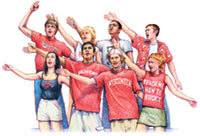
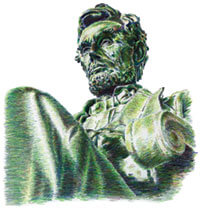
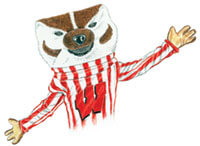
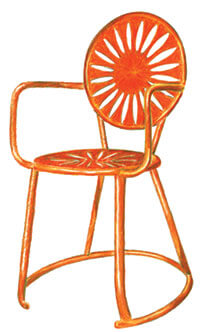
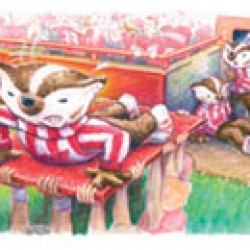
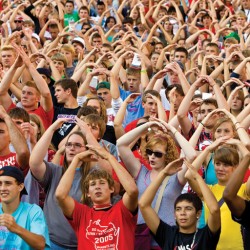
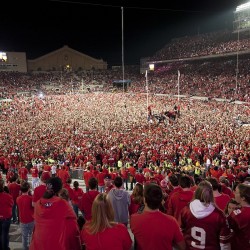
Comments
Elaiine Miller January 31, 2012
Of course I knew all of these things–but I was a student when most of these traditions was instituted. Class of ’56
MG Van Lieshout March 17, 2012
Loved this article !
ray July 19, 2014
Grew up in Milwaukee and far northern WI, but need to learn these things that I don’t already.
Tom Zinnen July 22, 2014
Not all definitions of the Wisconsin Idea are created equal–nor have they evolved equally. The Charles Van Hise version of what came to be known as The Wisconsin Idea is found in this ending passage from a 1905 speech: “I shall never be content until the beneficient influence of the University reaches every family of the state. This is my ideal of a state university.” In this passage he does not mention education. He does not mention classroom. He does mention “every family.” He does mention “in the state.” By 1905, the University of Wisconsin was becoming a leader in both research & extension work, and those comprised a leading “beneficient influence.” To this day, while only 29,000 students can be undergrads here, we still aspire to benefit the lives and help fuel the lifelong learning of all 5.7 million Wisconsinites. I remain in favor of distilling the definition of the Idea into a Wisconsin-focused brandy, rather than diluting it into some vague global kool-aid. We sing the exact words of Varsity. We read the exact words of the Sifting & Winnowing plaque. We should likewise quote the exact words that launched the University’s aspiration to benefit every family of Wisconsin.
Ellyn ( Jones) Wiens December 27, 2022
What about ?honest Abe and the virgins? I was there 1957-1961 and again 1963-1966 for grad school. It was said that if a girl walked in front of the Honest Abe statue and he stood up, she was a virgin.
Mary Hotchkiss Coneway September 23, 2023
(As above re the statue of Lincoln)